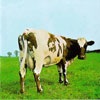By Jeanette Fitzsimons
Cross-posted from Coal Action Network Aotearoa
Why would Fonterra spend several million dollars on a process lasting nearly a year, seeking planning consent for a huge new milk drier that it knows will never be built? Perhaps that’s not a lot of money to them – after all, one million is only three months’ salary for their CEO.
Fonterra’s proposed Studholme project, just outside of Waimate in South Canterbury, would see two new spray driers powered by two immense coal boilers – one 65MW, the other 50.
 This is the biggest new coal burning project in the country, with the hearing happening just as our Minister for Climate Change is about to travel to New York to sign the Paris agreement where we undertook to reduce our greenhouse emissions a totally inadequate 11% below 1990 levels. (It’s even more inadequate when creative accounting turns this into more like +10%).
This is the biggest new coal burning project in the country, with the hearing happening just as our Minister for Climate Change is about to travel to New York to sign the Paris agreement where we undertook to reduce our greenhouse emissions a totally inadequate 11% below 1990 levels. (It’s even more inadequate when creative accounting turns this into more like +10%).
Fonterra is already the second biggest coal burner in the country and grew its coal use by 38% between 2008-2013. They pay lip service to climate change but in practice are totally wedded to coal. Continue reading “Fonterra’s coal-fired climate folly”

 Another report this week drives home the message that the world’s poorer people are going to suffer the early and potentially devastating effects of climate change. The report is the work of the
Another report this week drives home the message that the world’s poorer people are going to suffer the early and potentially devastating effects of climate change. The report is the work of the  New Zealand’s farming leadership have not distinguished themselves in the debate about climate policy. Federated Farmers president Don Nicholson has
New Zealand’s farming leadership have not distinguished themselves in the debate about climate policy. Federated Farmers president Don Nicholson has  Government ministers have deliberately played down the role of forestry in meeting emissions targets, documents released under the Official Information Act suggest.
Government ministers have deliberately played down the role of forestry in meeting emissions targets, documents released under the Official Information Act suggest.
You must be logged in to post a comment.